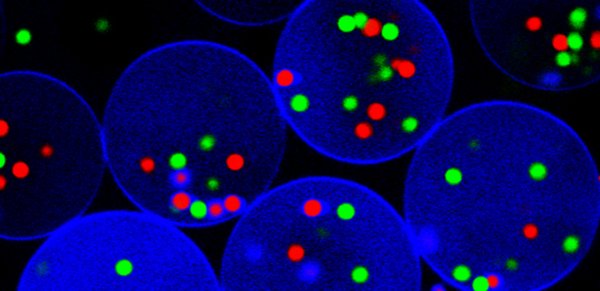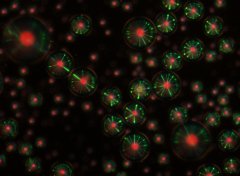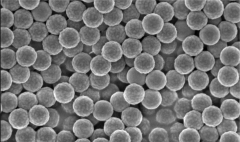
Physical Chemistry and Soft Matter
Physical Chemistry and Soft Matter at Wageningen University & Research is interested in phenomena at the nanoscale, where creative chemistry is essential, complex physics is a rule rather than an exception and biology comes to life.
Chair holder
News
-
Women’s Representation in PCC
-
How do ticks stick? Linking tick adhesion to protein phase transitions
-
WUR startup NanoMoi takes measurements for restoration of The Night Watch
-
Young Scientist Presentation Award at the Brightlands Polymer Days 2024
-
Scientists develop sticky pesticide to combat pest insects
-
PCC PhD Rob de Haas is awarded UFW Best Research Paper of the Year award 2024
-
Bonds that strengthen under tension built in the lab for the first time
Our research
-

Polymer materials and coatings
While often innoculous, polymers materials and coatings are everywhere. These materials are often described by the chemical components, but their function arises from assembly and structure across multiple length scales from the molecular, mesoscopic, millimeter, to macroscopic. The research at PCC focuses on designing the molecular structure to elicit a macroscopic response, while also understanding how that reponse manifests across multiple length scales. We employ both synthetic and computation techniques to bridge these length scales. Topic includes recyclable complex coacervate coatings, controlling network topology for soft materials, and using biobased polymer for adhesives.
-

Self-assembly of biomolecules
Soft materials and biomolecular systems are often self-assembled from small components (molecules, particles) through weak interactions such as electrostatic attraction, hydrophobic interactions, hydrogen bonds etc. Structure formation through self-assembly is at the heart of many of the unique physical properties of soft materials and is a crucial topic in both teaching and research at PCC. We explore biomolecular self-assembly over a diverse range of topics: protein misfolding, condensation and amyloid formation, by leveraging the development of nanoscale microscopy and spectroscopy; primarily using on-chip microfluidic technology and microscopy/spectroscopy techniques on biomolecular condensates and their interplay with membranes, in the context of synthetic as well as natural biological systems; and designing soft materials made out of both natural and de-novo sequence designed biopolymers.
-

Flow of complex fluids
Panta rhei – everything flows. The research on complex fluids in PCC spans a wide range of topics but with one central theme in common: flowing matter. We combine experimental, theoretical, and numerical methods to solve both curiosity-driven and industrially-motivated problems pertaining to fluid dynamics in soft matter systems. The topics include flows in biological and bio-inspired systems (swimming of microorganisms, biomolecular condensates) as well as in synthetic systems (emulsions, polymer networks, coacervates). The complexity arises from the nature of the fluid (multiphase, non-Newtonian) and/or the nature of the flow, and we use several techniques to address these scenarios such as high-speed imaging, laser speckle imaging, (confocal) microscopy, optical tweezers, rheometry, and high-fidelity simulations.
-

Soft matter instrumentation
Alongside standard commercial equipment for soft matter investigation, PCC develops in-house instruments that can explore new scientific questions. While instrument development is not our primary purpose, we use tailored approaches when necessary to answer these questions. Examples include different specialized variants of Laser Speckle Imaging (LSI: microscopy of nanoscopic motions in non-transparent systems), AFM (e.g. combined with IR spectroscopy), and rheometry (multi-point indentation, adhesion, rheo-LSI). We also expand and enhance the capabilities of existing techniques, e.g. by controlled environments, 3D printed components, microfluidic devices, and programmed hardware and software interfaces.
-

Sustainable polymers
Our dependence on non-renewable fossil materials is evident when we analyze how polymers have become a part of our daily activities. With the aim of producing a greener society, our goal is to produce Sustainable Polymers (SPs) that are inspired by nature. We develop SPs from renewable, recycled, and waste carbon resources and their combinations, which, at the end of life, can be recycled, biodegraded, or composted. Overall, our SPs exhibit a reduced environmental impact throughout their life cycle.
- Unfortunately, your cookie settings do not allow videos to be displayed. - check your settings
Education at PCC
PCC is involved in teaching
several courses as shown below. Additionally you can also find information about currently offered internship or thesis projects in our department